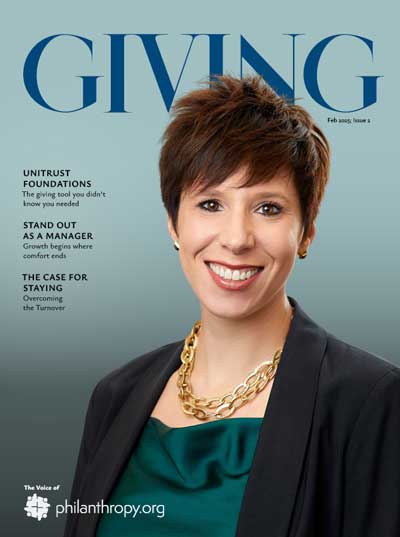There’s a lesson that planned giving program fundraisers can learn from the history of Niagara Falls — specifically, about a suspension bridge that, from 1855 to 1897, connected the United States to Canada over the roaring waters. Hence, the story how it was built.
Engineering Challenge
The Niagara River, which drains Lake Erie into Lake Ontario, is 800 feet wide at the falls. The sheer cliffs that make up either side of the Whirlpool Gorge are 225 feet high. In the 19th Century, there was no technology available to easily span that gap and begin construction of a bridge.
Engineers proposed using a rocket, or a shell fired by a cannon, to carry a line across the gorge, but neither idea offered a very probable solution.
A Marketing Twist: Hire a Kid with a Kite
Enter local ironworker Theodore G. Hulett, who told the engineers to go fly a kite — or rather, have a child fly one and offer a prize for the first kite to make it to the other side of the gorge.
This Was Brilliant Marketing …
With $5 on the line — a splendid and princely sum in those days — 16-year-old Homan Walsh beat out the scores of other kids from nearby towns who participated. He managed to get his kite across that 800-foot gap, where its line was then tied off.
What’s the Big Deal?
Engineers used the kite string as a pilot line to pull a stronger rope from the Canadian side back to the American side. That was used to pull an even thicker, stronger rope back to Canada. After several of these exchanges, a rope strong enough to carry a cable was finally in place. The cable was pulled across — and that provided the starting point for the foundation of the bridge.
“Building the Bridge to an Endowment” (Building a Planned Giving Program)
How does this relate to planned giving? Because a simple, single kite with a single small thread (i.e., your first baby step) became the catalyst for a massive construction project that led to the bridge (i.e., your endowment).
It is amazing how many answers lie in simple solutions. Right in front of us.
So many fundraisers are “stunned” when they have to face the startup of a planned giving program — they envision it being a massive project and just do not know where to begin. Yet by following the same principle as the one used to build the suspension bridge, one can easily start a planned giving program with a few simple steps.
In fact, you can start one for less than $100 if you do not have a program at all. Or you can start one for less than $2,500 by using our beneficiary designations toolkit if you have the budget. Here’s the “almost free” version:
- Place a display ad covering the general “ways to give” in all of your internal publications (alumni magazine, playbill, patient journal, newsletter, etc.). Cost: $0.00.
- Use a blurb about planned giving as part of your email signature line. This can be your elevator pitch. There are plenty in our Pocket Guide. Cost: $39.95.
- Gather your team for a 90-minute primer. You can do that after reading our Pocket Guide, or even invite us to speak to your staff — this last option, our Primer, is more expensive, but well worth it. Cost (optional): $3,600.00.
- Learn some of the technical aspects of building a planned giving program with The Planned Giving Bible.
- Let your board know about your plan and ask them to spread the word. They will! Our Pocket Guide for board members is a perfect handout. Cost: $9.00.
- Drop an elevator pitch into the bottom of your letterhead. Cost: $0.00.
- Include a planned giving pitch in your voicemail (yes, we have clients who do this). Cost: $0.00.
- Make sure this line is included in all of your solicitation materials: “Make a gift that costs you nothing during your lifetime. Ask us how.” That simple sentence can be the basis of your initial planned giving program efforts. And it’s free! Cost: $0.00.
- Send out a simple mailing to your most loyal prospects letting them know you are in the planned giving business. A couple of series of postcards will do. Cost: U.S. Postage + Printing.
- Buy a kite, act like a kid, and have fun. Cost: $5.00.
I could go on, but I won’t. Instead, spend some time on this website for more inspiring planned giving program ideas, and for planned giving postcards, visit our Idea Center.
Categories: Planned Giving Marketing, Sustainability



